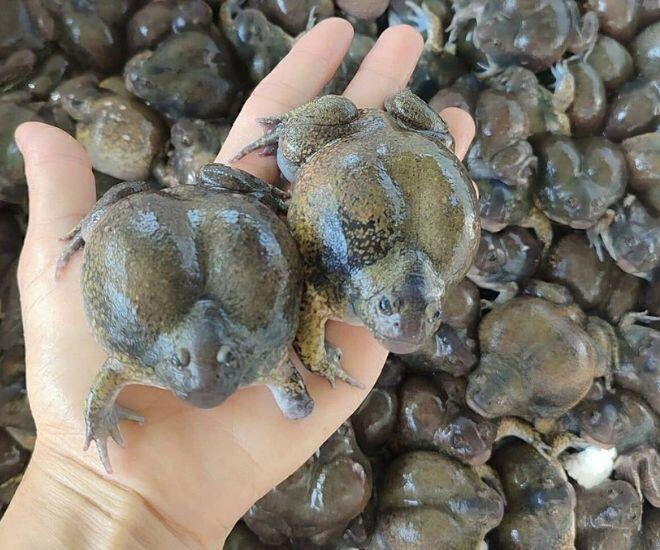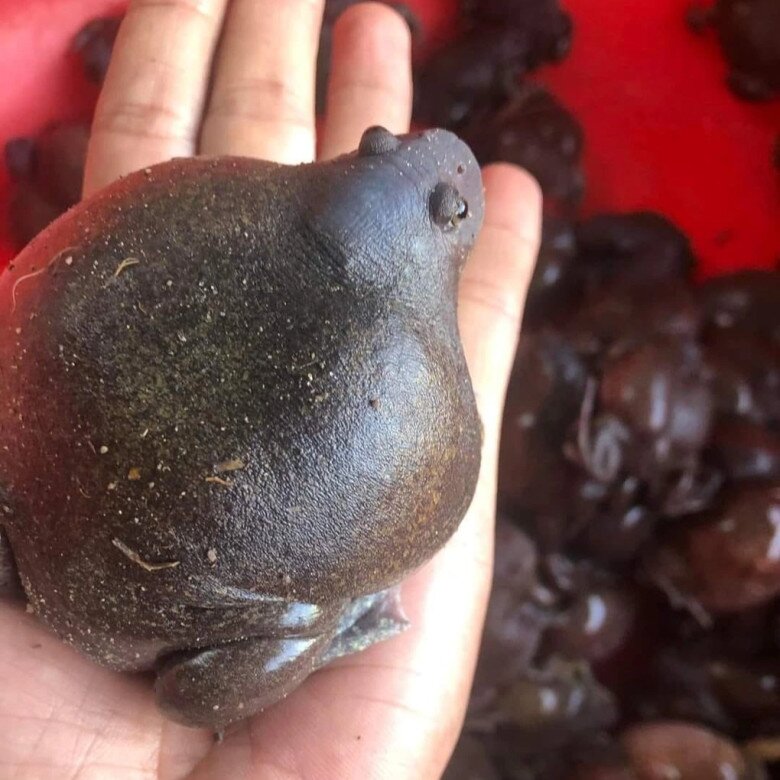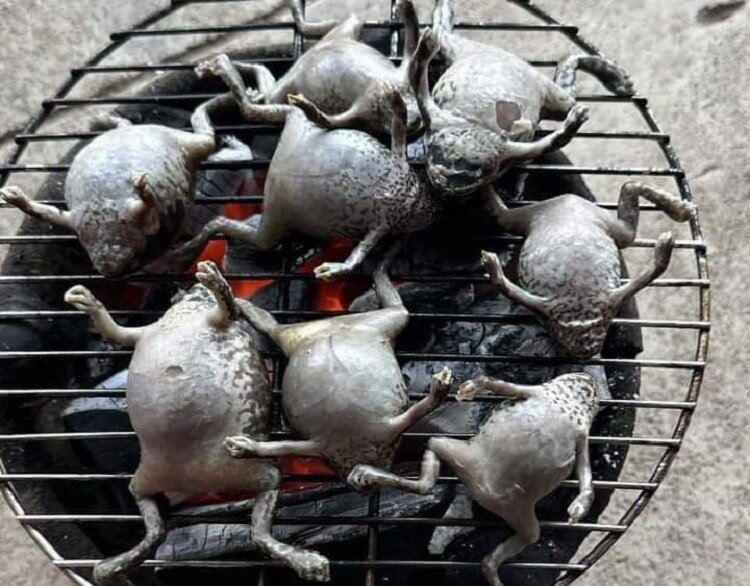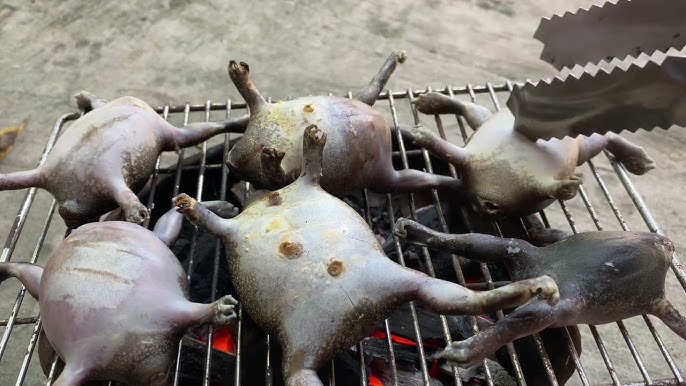
The Òn Frog, a Unique Delicacy from Ninh Thuan
According to the local people, especially the Cham community living in Ninh Thuan, the season for hunting Òn frogs begins with the first rains of the year, usually in May or June. After each heavy downpour soaks into the sandy soil, one can hear the distinctive, reverberating call of these frogs. This call signals the start of the only Òn frog hunting season of the year.
At this time, the Òn frogs, with their round bodies, characteristic swollen bellies, and slimy skin, emerge from their burrows to find food, mate, and lay eggs. Òn frogs are amphibians that typically inhabit sandy hills or mountain foothills. Their diet consists mainly of low-flying winged insects such as termites.

The value of Òn frogs extends beyond the local community. While they sell for only VND 70,000-75,000/kg in the local markets of Ninh Thuan, their price can soar to VND 250,000/kg when transported to major cities like Ho Chi Minh City, Binh Duong, or Dong Nai.
Images and videos of these frogs, prepared with their skin intact and cooked in various mouth-watering dishes, have gone viral on social media platforms. The posts and videos about tasting this “unusual frog dish” have attracted millions of views. Those who have tried it rave about its rich, unique flavor, while those who haven’t seem apprehensive or even disgusted by its appearance. This contrast has sparked lively discussions, further fueling the popularity of Òn frogs in the online food landscape.

Òn frog meat is considered a delicacy due to its high protein content and tender bones. One of the most popular dishes is a sour soup made with young tamarind leaves. To prepare this dish, the frogs are cleaned with salt to remove the slime, leaving the skin intact. They are then stir-fried with fragrant sauteed shallots and garlic. The soup base is made by grinding chili peppers, shallot heads, and salt, then adding tamarind juice and fresh tamarind leaves. Once the soup base boils, the frogs are added and cooked until done. The sour flavor of the young tamarind leaves blends beautifully with the rich, creamy taste of the frog eggs, creating an unforgettable culinary experience.
In addition to sour soup, Òn frogs can be prepared in a variety of delicious ways, such as steamed and served with a dipping sauce, grilled over charcoal and seasoned with salt and chili, or made into a spicy salad. The grilled dish is especially popular for its aromatic flavor, slightly crispy skin, and tender, sweet meat. These diverse cooking methods not only enhance the natural taste of the frogs but also showcase the creativity and skill of the local people in utilizing the natural resources available to them.
However, it is important to note that proper food safety practices must be followed when preparing Òn frogs. The frog’s intestines contain parasites and should be removed entirely before cooking. Additionally, thorough cooking is mandatory to ensure the safety of consumers and avoid potential health risks associated with consuming raw or undercooked frog dishes.

The Òn frog is not just a delicacy of the Cham people in Ninh Thuan but also a familiar dish in the Khorat Plateau in northeastern Thailand, where it is prepared in a similar fashion. This culinary connection highlights the cultural exchange between different regions and countries, showcasing the appeal of traditional, locally-sourced dishes.
The popularity of Òn frogs on social media raises important questions about sustainability and conservation. Similar to coconut caterpillars, wild bee larvae, buffalo skin, and “thang co” (a traditional Vietnamese dish made from horse meat), Òn frogs are part of the traditional cuisine of ethnic minorities. However, as these dishes gain fame, concerns about overhunting and sustainable consumption arise. Increased demand can lead to excessive hunting, disrupting the ecosystem and threatening the supply of these frogs. While the Òn frog is not currently listed as an endangered species, the indiscriminate hunting of any wild animal for culinary pleasure is condemnable.
In today’s globalized world, with a heightened awareness of environmental protection, many people, especially the youth, are embracing more selective, civilized, and sustainable food trends. This may lead to the popularity of Òn frogs being short-lived. However, it also presents an opportunity for local communities to responsibly promote their traditional culinary culture, striking a balance between tourism development and nature conservation. This approach will ensure the longevity and sustainable development of this “unusual” delicacy.






























